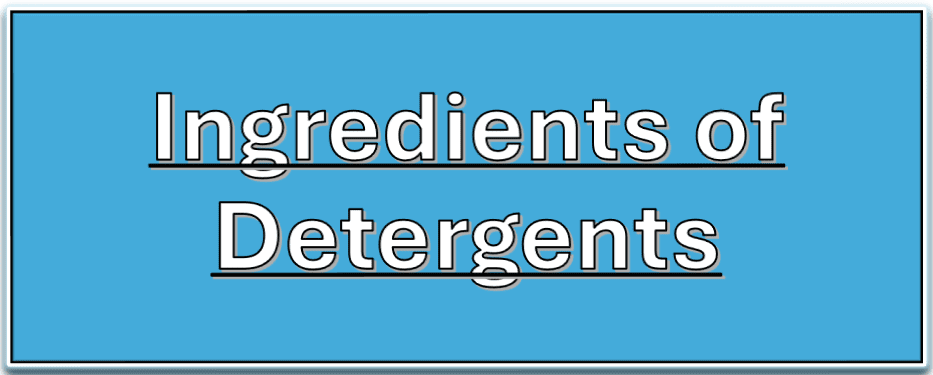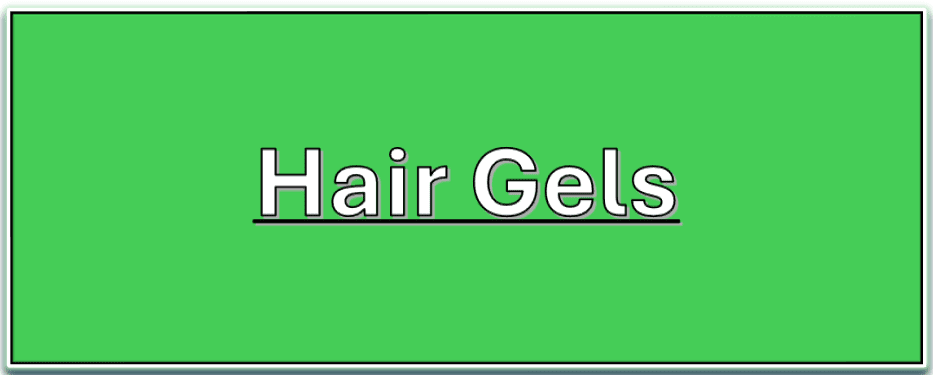Modern detergents can comprise 20 or more ingredients, depending on what benefits the detergent is meant to deliver. This article is to provide a general overview of the more common ingredients.
Surfactants
The most common ingredient of detergent formulations. Their primary function is to modify the interface between two or more phases to promote the dispersion of one phase into another. Generally, surfactants are classified according to their hydrophilic component as nonionic, anionic, cationic, or amphoteric.
Hydrotropes
Hydrotropes are used to prevent the surfactants from separating out of the formula.
Solvents
The selection of solvents for use in detergent formulation depends on the nature of the actives being formulated, the intended application of the detergent, and economics. Water is the dominant solvent in most household and industrial cleaning formulations.
Foam boosters
While most surfactants are capable of generating and sustaining foam in the absence of soil, these foams rapidly collapse in the presence of soil, especially particulate and fatty soils. In applications where foam must be maintained throughout the course of detergent use, specific boosters may be added. Alkanolamides, particularly mono- and diethanolamides, are effective foam stabilizers used in dishwashing liquids and shampoos.
Antifoam agents
In many applications, it is desirable to minimize foam generation. For example, in automatic dishwashing foam generation can interfere with rotation of the spray arm leading to degradation in the performance of the dishwasher. Antifoam agents act to reduce or eliminate foams. They either prevent formation of the foam or accelerate its collapse.
Builders
A generic term used to refer to any number of materials whose primary function is the removal of Ca2+ and Mg2+ ions from aqueous solutions—and chelants are widely used in the formulation of various detergents.
Thickeners
It is often desirable to modify the rheology of a detergent formulation to fit a particular application. Thickening can be achieved through the use of inorganic electrolytes, e.g., NaCl; clays, such as laponite or hectorite; or a high-molecular-weight polymer like carboxymethylcellulose, guar, or xanthan gum.
Acids and Alkalis
The use of acids and alkalis for cleaning has a long tradition. Mineral acids such as hydrochloric acid or acid sulfates such as sodium or potassium hydrogen sulfate served very early on to remove limescale and rust. Soda, alkali silicates, and hydroxides were principally employed for the more easily removed oily and fatty dirt.
Bleaching Systems
Bleaches are common components of laundry, automatic dish wash, and hard surface cleaning detergent formulations. Four basic technology approaches have been taken to deliver bleaching in these products:
- chlorine-based bleaches.
- peroxide-based bleaches.
- activated peroxide systems.
- metal catalysts.
Brighteners/fabric whitening actives
Whiteness has always been considered as a symbol of perfectly clean laundry. After repeated laundry cycles, white fabrics might show a yellowish shade because of redeposited impurities. These materials enhance the visual appearance of white surface by absorbing ultraviolet (UV) radiation and emitting via fluorescence in the visible portion of the spectrum.
Enzymes
Used primarily in cleaning formulations enzymes promote soil removal by the catalytic breakdown of specific soil components. Proteases (protein degrading) amylases (starch degrading), lipases (lipid degrading), and cellulases (cellulase degrading).
Soil release polymers
Soil release refers to the enhanced removal of soil from a surface as a result of modification of that surface with a specific agent, typically a polymer that alters surface polarity thereby decreasing adherence of soil.
Abrasives
The purpose of abrasives of varying chemical compositions, granule size, and granule structure in cleaner and care products is to remove stubborn (pigment) dirt from surfaces or to regenerate, upgrade, or maintain them through mechanical action such as rubbing, brushing, or scouring with suitable agents (scouring powders, liquids, or pastes).
Antiredepositionagents
Suspension of soil after removal from a surface is important in cleaning applications to avoid redeposition of the soil back onto the cleaned surface. In general, two types of polymeric dispersants are used in detergent formulations—polymers comprising ionically charged groups and nonionic polymers.
Corrosion inhibitors
Most modern detergents contain small amounts of water glass, which is an excellent corrosion inhibitor. The colloidal silicate is capable of depositing in a very thin layer on the surface of the metal. It protects aluminum against the attack of hydroxyl ions from the aqueous solution.
Fillers and formulation aids
Inorganic compounds like sodium sulfate are commonly required as filling compounds for a heavy-duty powder detergent. They grant the detergent the following important properties: – good flowability, – easy dosage, – good solubility, – no caking of the powder, even under high humidity conditions, – no dusting. For a liquid detergent, some formulation aids may be needed. One of the most important formulation aids is a compound with hydrotropic properties. It stabilizes the dispersion of ingredients in the aqueous solution and keeps it homogeneous so that no phase separation or precipitation is detectable even with changing temperatures. Short-chain alkylbenzene sulfonates like toluene sulfonate or cumene sulfonate as well as urea, ethanol, isopropanol, or polyglycol ethers are commonly used.
Maintenance and Care Components
The most important ingredients of maintenance and care products are polymer dispersions, wax emulsions, and silicones. In addition, the so-called fluorocarbon resins play a role, although now decreasing, in shoe and leather care.
Perfumes
Fragrance oils have at least two functions in laundry detergent and cleaner formulations: To mask unpleasant odors and to influence the purchasing behavior of the consumer in favor of the particular product. In addition, a pleasant pervading perfume is expected for some time after fabrics have been washed or large surfaces or bath and sanitary ceramics have been cleaned. The same holds for room fresheners. The nature of the fragrance must appeal to the consumer and enhance the product image.
Dyes
Colors are added predominantly for aesthetic reasons, but it has a functional character as well. The different shades serve to distinguish the products. Furthermore, the intrinsic color of raw materials can be covered in this way. Nearly all heavy-duty powder detergents sold today are colorless because the ingredients used are mostly white. Note: fragrance and color must match, for example, yellow suggests citrus fragrance.
Antimicrobial Agents
In general, chemical substances that can target and kill microorganisms or restrict their growth are termed antimicrobial agents. A slightly different meaning is given to biocides or biocidal agents, which also act against microorganisms, but has a wider range. The term includes substances that are active against higher organisms, e.g., insects, snails, or rats.







